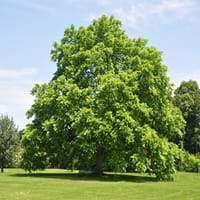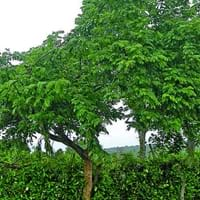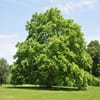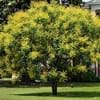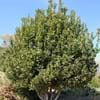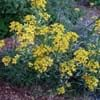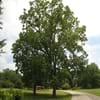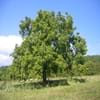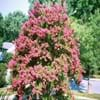What is
Life Span
Biennial
Perennial
Type
Tree
Tree
Origin
North America, United States, Northeastern United States, Mid-Atlantic United States, North-Central United States, Central United States, Canada
Mexico, Central America, South America
Types
Not Available
Not available
Habitat
Anthropogenic, Floodplains, Forests
Subtropical climates, tropical environments, Tropical regions
USDA Hardiness Zone
3-9
10-15
AHS Heat Zone
9-1
12-9
Sunset Zone
1a, 1b, 2a, 2b, 3a, 3b, 4, 5, 6, 7, 8, 9, 14, 15, 16, 17
H1, H2, 13, 23, 24
Habit
Oval or Rounded
Oval or Rounded
Information
Plant Size
Minimum Height
1,220.00 cm
33
610.00 cm
99+
Minimum Width
1,220.00 cm
14
460.00 cm
99+
Plant Color
Flower Color
Yellow green
Pink, Light Pink
Flower Color Modifier
Bicolor
Bicolor
Fruit Color
Green, Brown
Green, Chocolate
Leaf Color in Spring
Light Green
Green
Leaf Color in Summer
Green, Dark Green
Green
Leaf Color in Fall
Yellow, Gold
Green
Leaf Color in Winter
Not Available
Green
Shape
Leaf Shape
Pinnate
Pinnate
Thorns
No
No
Season
Plant Season
Spring, Summer, Fall
Spring
Growing Conditions
Sunlight
Full Sun
Full Sun, Partial Sun
Growth Rate
Slow
Fast
Type of Soil
Clay, Loam
Loam, Sand
The pH of Soil
Acidic, Neutral, Alkaline
Acidic, Neutral, Alkaline
Soil Drainage
Well drained
Average
Bloom Time
Late Spring, Early Summer
Spring, Late Spring
Repeat Bloomer
No
No
Tolerances
Not Available
Drought, Dry Conditions
Care
Where to Plant?
Ground
Ground
How to Plant?
Seedlings
Stem Cutting
Plant Maintenance
Medium
Low
Watering Plants
Watering Requirements
Average Water Needs, Do Not over Water, Requires regular watering
Average Water Needs, Keep the ground moist but not water-logged
In Summer
Lots of watering
Lots of watering
In Spring
Moderate
Moderate
In Winter
Average Water
Average Water
Soil
Soil pH
Acidic, Neutral, Alkaline
Acidic, Neutral, Alkaline
Soil Type
Clay, Loam
Loam, Sand
Soil Drainage Capacity
Well drained
Average
Sun Exposure
Full Sun
Full Sun, Partial Sun
Pruning
Remove damaged leaves, Remove dead branches, Remove dead leaves
Remove damaged leaves, Remove dead branches, Remove dead leaves
Fertilizers
All-Purpose Liquid Fertilizer
All-Purpose Liquid Fertilizer, Fertilize in early spring, Nitrogen, Phosphorous, Potassium, Requires high amount of nitrogen
Pests and Diseases
Red blotch
Aphids, Brown Spots, Scab, Scorch
Plant Tolerance
Not Available
Drought, Dry Conditions
Facts
Flowers
Insignificant
Showy
Flower Petal Number
Not Available
Single
Fruits
Showy Fruit
Yes
Not Available
Edible Fruit
Yes
No
Fragrance
Fragrant Flower
No
Not Available
Fragrant Fruit
No
No
Fragrant Leaf
Not Available
No
Fragrant Bark/Stem
Not Available
No
Showy Foliage
Yes
Yes
Showy Bark
Yes
Yes
Foliage Texture
Coarse
Medium
Foliage Sheen
Matte
Matte
Evergreen
No
No
Invasive
No
Sometimes
Self-Sowing
Yes
Yes
Attracts
Birds, Squirrels
Bees, Not Available
Allergy
Gastric, Pollen
Not Available
Benefits
Uses
Aesthetic Uses
Not Available
Beautification, Showy Purposes
Beauty Benefits
Good for skin
Good for skin, Reduce Bruises
Edible Uses
Yes
Yes
Environmental Uses
Air purification, Shadow Tree
Agroforestry, Fixes Nitrogen, Insect Repellent, soil stabilisation
Plant Benefits
Medicinal Uses
Dysentry, Intestinal irritations, Small pox, Stomach pain
Antifungal, Cold, Expectorant, Fever, Rheumatism, Sedative, Ulcers
Part of Plant Used
Sap, Seeds
Flowers
Other Uses
Application in Furniture, Decorative veneers, flooring, paneling, Herbicide
Cattle Fodder, Used as firewood, Wood is used for making furniture
Used As Indoor Plant
No
No
Used As Outdoor Plant
Yes
Yes
Garden Design
Edible, Shade Trees
Shade Trees, Street Trees, Tropical
Scientific Name
Botanical Name
JUGLANS cinerea
GLIRICIDIA sepium
Common Name
Butternut
Mexican Lilac, Mother-of-coffee, Quickstick
In Hindi
Butternut Tree
QUICKSTICK
In German
Butternut Baum
QUICKSTICK
In French
noyer cendré
QUICKSTICK
In Spanish
árbol de nogal
QUICKSTICK
In Greek
Butternut Δέντρο
QUICKSTICK
In Portuguese
Árvore Butternut
QuickStick
In Polish
butternut Drzewo
QUICKSTICK
In Latin
Butternut ligno
Quickstick
Classification
Kingdom
Plantae
Plantae
Phylum
Magnoliophyta
Magnoliophyta
Class
Magnoliopsida
Magnoliopsida
Order
Juglandales
Fabales
Family
Juglandaceae
Fabaceae
Genus
Juglans
Gliricidia
Clade
Angiosperms, Eudicots, Rosids
Angiosperms, Eudicots, Rosids
Tribe
Not Available
Robinieae
Subfamily
Not Available
Faboideae
Number of Species
Not Available
5
99+
|
||
|
||
|
